10 Warning Signs Of Moles In Your Garden
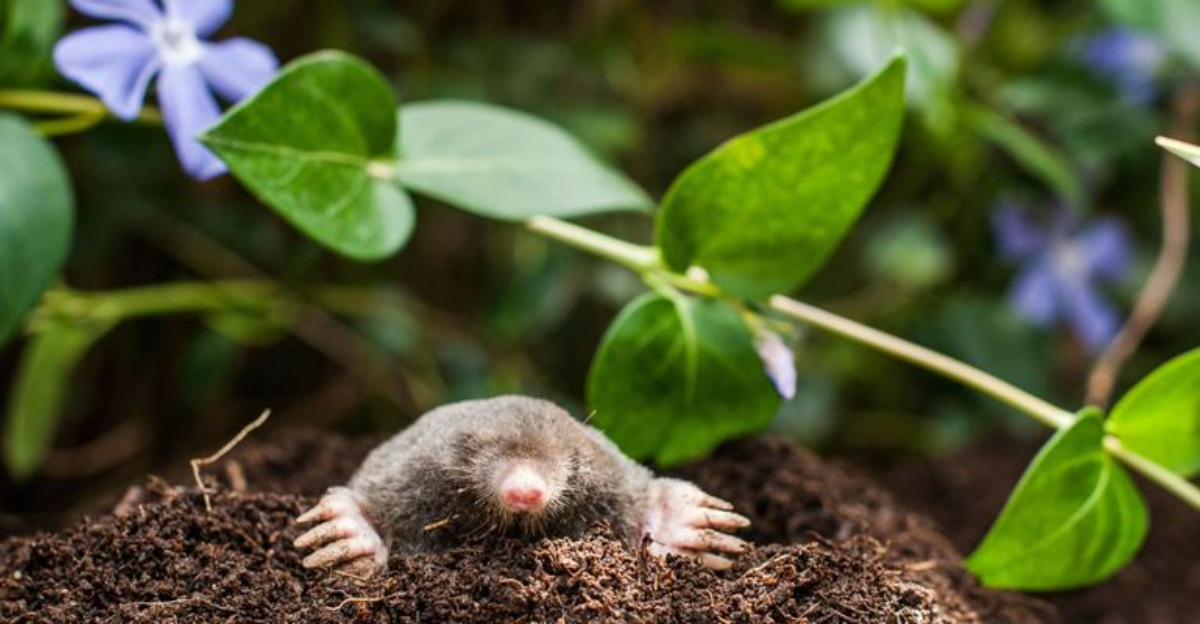
Moles can be a garden’s unseen nemesis, quietly disrupting the harmony beneath the surface. These subterranean creatures, though seldom seen, leave behind telltale signs of their presence.
By learning to recognize these indicators, you can take steps to protect your garden from their disruptive tunneling. So, here are some warning signs to watch out for in your garden, which may indicate mole activity lurking beneath the soil.
1. Raised Molehills
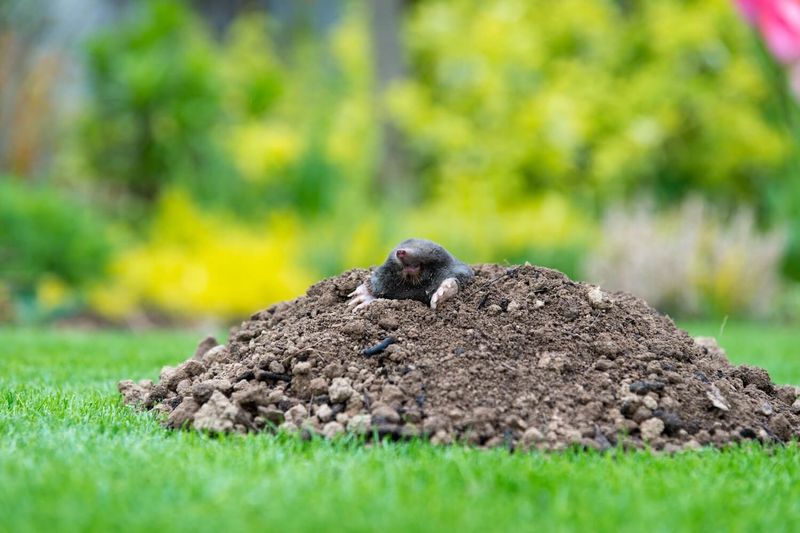
One of the most recognizable signs of moles in your garden is the sudden appearance of raised molehills. These small, cone-shaped piles of soil can appear virtually overnight, leaving many gardeners perplexed.
Moles create these mounds as they excavate tunnels beneath the surface, pushing the displaced soil upward. Although moles themselves are rarely seen, their molehills are a clear indication of their underground activity.
The presence of molehills can be particularly frustrating for those who take pride in a manicured lawn. These mounds disrupt the even surface of the grass, making it look unkempt and uneven.
In addition to being visually unappealing, molehills can also make mowing the lawn more challenging, as they can damage mower blades if not removed.
Gardeners often find themselves at a crossroads when deciding how to address molehills. While some choose to remove the mounds manually, others may opt for deterrents or professional mole removal services.
Regardless of the chosen method, understanding the nature of molehills is the first step in managing their impact on your garden.
2. Soft, Spongy Ground
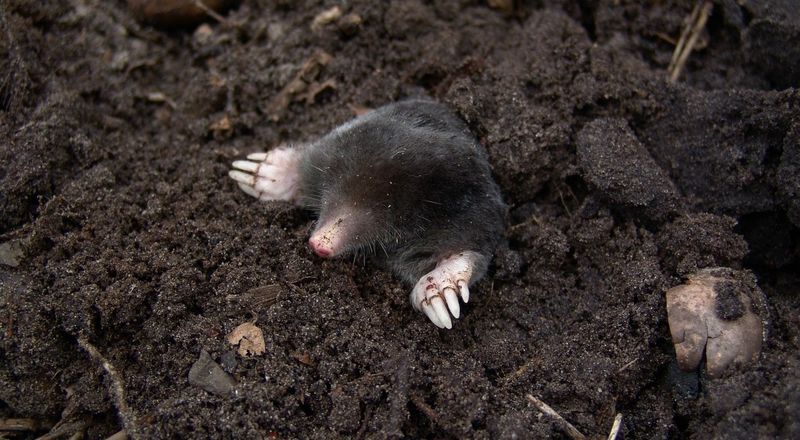
If your lawn feels soft or spongy underfoot, it might be a sign that moles are tunneling underneath. This sensation occurs because moles displace the soil as they dig, creating voids that cause the ground to sink when stepped on.
As a result, your previously firm lawn may now resemble a sponge, yielding beneath your weight. This change in ground texture not only affects walking but can also make maintaining your lawn more difficult.
For instance, pushing a lawnmower across a spongy surface can become cumbersome, and uneven patches may lead to scalping during mowing. The softness may also contribute to poor drainage, causing water to pool in certain areas.
To address this issue, some gardeners aerate their lawns to relieve compaction and improve drainage. Others may choose to seek professional assistance to identify and remedy the presence of moles.
Regardless of the approach, recognizing the link between spongy ground and mole activity is crucial for maintaining a healthy lawn.
3. Surface Tunnels (Ridges In Soil)
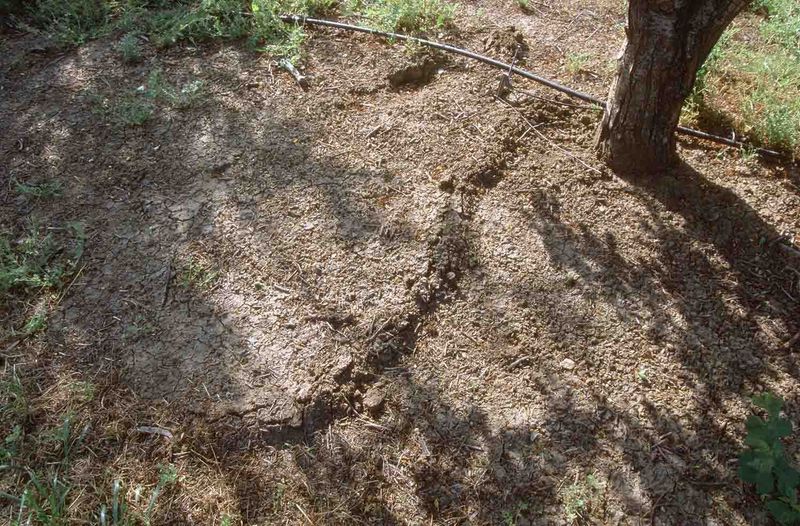
Surface tunnels, also known as ridges in the soil, are another hallmark of mole presence in your garden. These ridges appear as raised lines on the ground, tracing the path of the mole’s tunnel just beneath the surface.
As moles burrow, they push the soil upwards, creating these noticeable ridges that can crisscross through lawns and garden beds.
These surface tunnels can pose a variety of challenges for gardeners. Aside from being unsightly, they can disrupt the root systems of grass and plants, potentially leading to weakened or dying flora.
Furthermore, the uneven terrain can make walking or gardening difficult, as the ridges can cause tripping or difficulty in maneuvering gardening tools.
Gardeners might consider various strategies to mitigate the impact of these surface tunnels. Some opt for rolling the lawn to flatten the ridges, while others may use repellents or traps to manage the mole population.
Understanding these ridges’ implications allows for more informed decisions on preserving the aesthetics and functionality of your garden.
4. Wilting Or Dying Plants
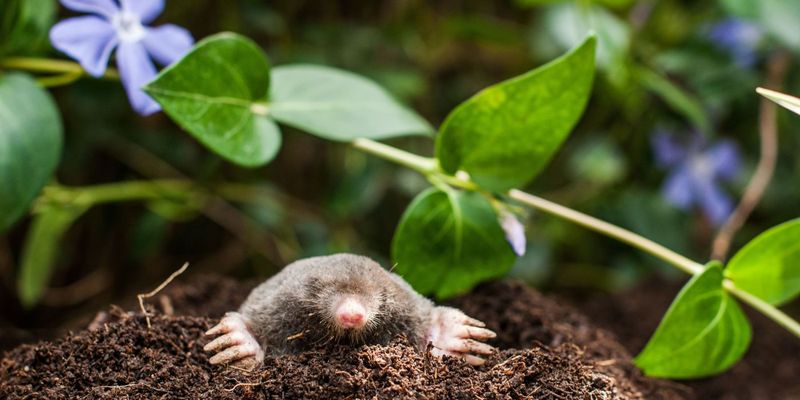
While moles don’t directly consume plants, their underground activities can still cause significant harm. One of the less obvious signs of moles in your garden is the wilting or dying of plants.
This happens because the mole’s tunneling can disturb and damage the root systems, preventing plants from absorbing necessary nutrients and water.
As roots are severed or displaced, plants may begin to show signs of stress, starting with wilting leaves and eventually leading to death if the root damage is severe. This can be particularly disheartening for avid gardeners who have invested time and effort into cultivating their plants.
To combat this issue, some gardeners use physical barriers or plant root baskets to protect the roots. Others might introduce natural predators or use electronic deterrents to keep moles at bay.
Recognizing the connection between mole activity and plant health can guide gardeners in taking proactive measures to safeguard their beloved plants.
5. Increased Weed Growth
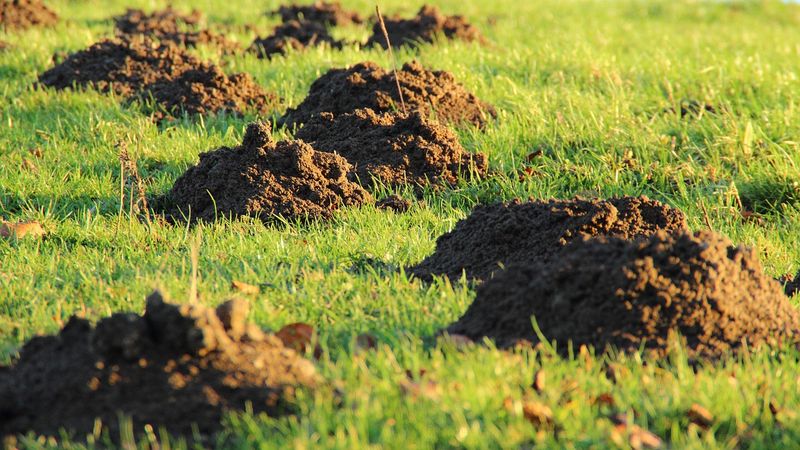
Increased weed growth is an indirect but significant sign of mole activity in a garden. As moles tunnel through the soil, they inadvertently disturb it, bringing dormant weed seeds to the surface where they can germinate.
This disturbance creates a perfect opportunity for weeds to take hold and thrive, often outcompeting desired plants for sunlight, nutrients, and space.
Gardeners may find themselves battling a sudden influx of weeds, which can be frustrating and labor-intensive to manage.
The presence of moles can exacerbate this issue by continuously disrupting the soil, and perpetuating the cycle of weed growth. This can lead to a less tidy appearance in garden beds and lawns, overshadowing the effort put into cultivating a well-maintained garden.
To address the problem of increased weed growth, gardeners might consider mulching or applying pre-emergent herbicides to suppress weeds.
Additionally, some may choose to focus on mole control methods to reduce soil disturbance. Understanding the link between mole activity and weed proliferation helps gardeners develop strategies to maintain the aesthetic and health of their gardens.
6. Damage To Lawn Or Garden Borders
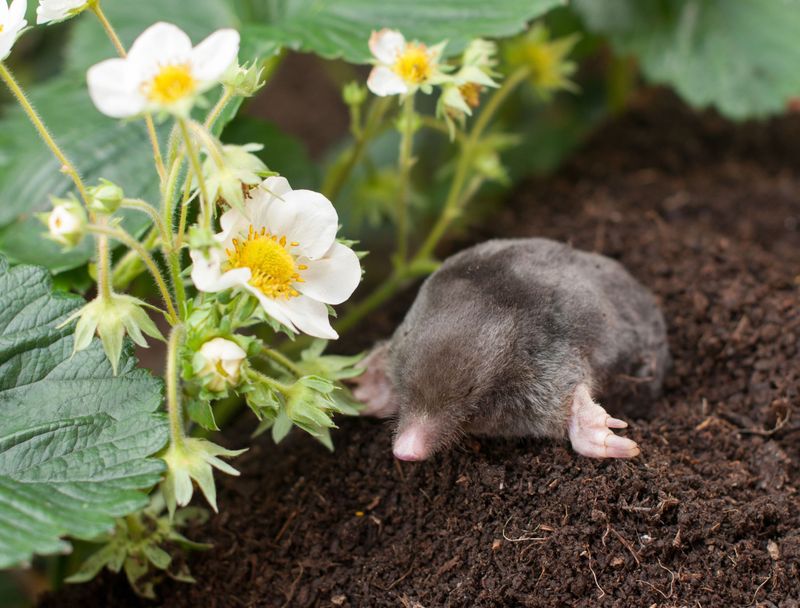
Moles often tunnel along the edges of gardens, patios, and flowerbeds, leading to noticeable damage to borders and structures.
This tunneling can cause soil to loosen, resulting in shifted stones, bricks, or pavers that define garden boundaries. Such disruptions not only affect the visual appeal but can also pose structural challenges.
For gardeners, the sight of leaning or displaced garden borders can be disheartening. The destabilization of these structures may lead to further issues, such as soil erosion or water runoff problems.
Additionally, the uneven surfaces created by mole activity can pose tripping hazards and complicate maintenance tasks.
Addressing this damage may involve reinforcing or repositioning garden borders, as well as implementing mole control strategies to prevent further tunneling. Some gardeners choose to install underground barriers to deter moles from entering certain areas.
Recognizing the impact of mole activity on garden structures is essential for maintaining both the functionality and appearance of garden spaces.
7. Missing Or Displaced Mulch
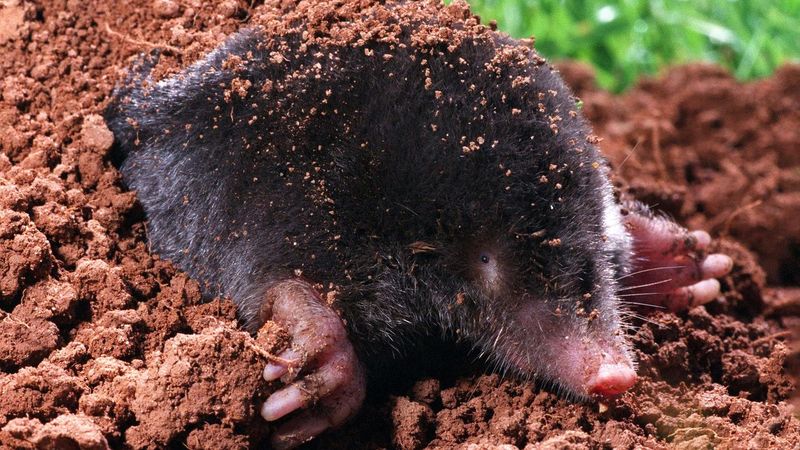
When moles inhabit a garden, mulch and topsoil may appear scattered or displaced. As moles tunnel through the earth, the soil movement can push mulch out of place, leaving garden beds looking messy and unkempt. This displacement can also expose the soil, making it more susceptible to erosion and water loss.
For gardeners who use mulch to retain moisture and suppress weeds, its disturbance can pose significant challenges.
The scattered mulch not only diminishes the aesthetic appeal but also reduces its effectiveness in protecting the soil and plants beneath. This can lead to an increase in weed growth and a decrease in soil moisture retention.
To tackle the issue of displaced mulch, gardeners might consider using heavier mulch materials or securing the mulch with landscape fabric. Additionally, addressing the mole problem itself can help prevent future displacement.
By understanding how mole activity influences mulch placement, gardeners can take steps to maintain the functionality and appearance of their garden beds.
8. Presence Of Other Pests
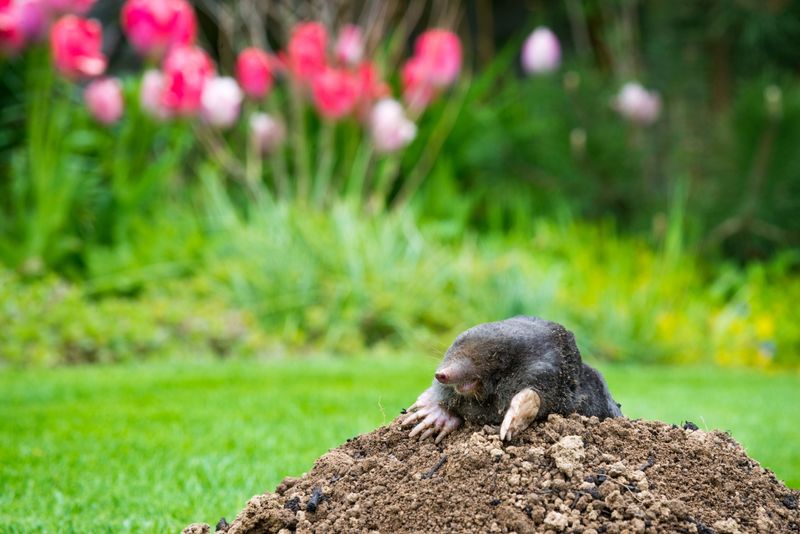
Moles primarily feed on earthworms, grubs, and other insects found in the soil. Consequently, an increase in these pests can attract moles to your garden.
This relationship means that the presence of moles might be an indicator of a larger pest problem, with the moles acting as both a symptom and a natural control method.
While moles themselves do not harm plants, the pests they consume can cause significant damage to roots and foliage. For instance, grubs feed on grass roots, leading to brown patches and weakened plants.
Therefore, a mole’s presence can serve as a warning sign that your garden may be experiencing an influx of these harmful pests.
To address this issue, gardeners may choose to implement pest control measures, such as introducing beneficial nematodes or using insecticides.
Additionally, managing the mole population can indirectly reduce pest numbers by removing one of their natural predators. Understanding the connection between moles and other pests can help gardeners develop a comprehensive approach to maintaining a healthy garden ecosystem.
9. Active At Dawn And Dusk
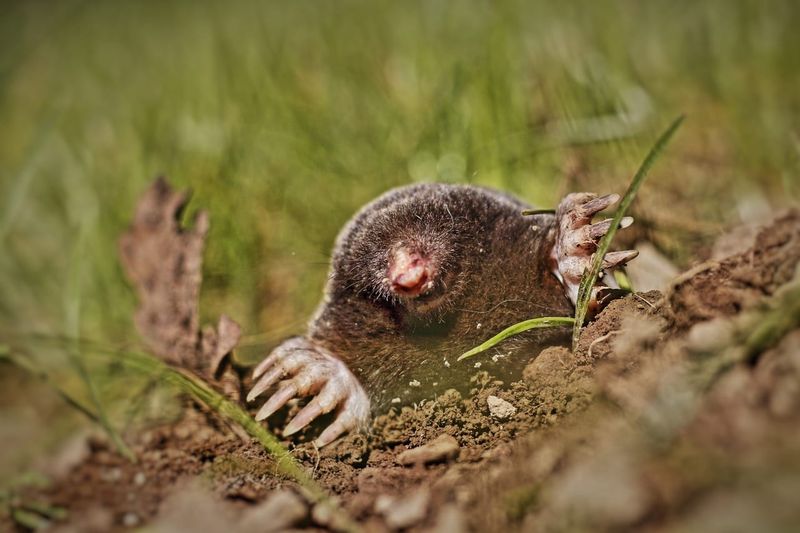
Moles are most active during the early morning and late evening hours, making these times ideal for observing signs of their presence.
Fresh molehills or soil disturbances appearing at dawn or dusk can indicate active mole activity beneath the surface. This behavior stems from the mole’s natural tendency to forage for food during cooler, quieter times.
For gardeners, this means that monitoring your garden during these key times can provide valuable insights into mole activity.
Observing new mounds or ridges in the soil during these periods can confirm suspicions of moles, allowing for timely intervention. This knowledge can also help in scheduling control measures when moles are most active.
Gardeners might consider setting traps or applying repellents during these peak activity hours to increase their effectiveness. Recognizing the significance of dawn and dusk in mole behavior can guide efforts to mitigate their impact and protect your garden from further disruption.
10. Increased Predator Activity
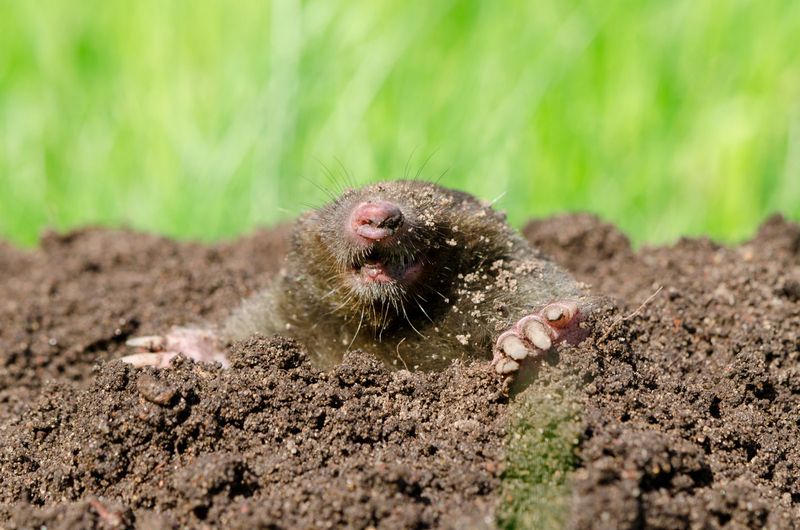
An uptick in predator activity, such as sightings of hawks, owls, or foxes, can signal the presence of moles in your garden.
These predators are drawn to areas with abundant prey, and moles provide a valuable food source. Observing an increase in these animals can, therefore, suggest that moles are active beneath the surface.
For gardeners, noticing more frequent visits from these predators can serve as an indirect indication of mole activity.
While predators help manage mole populations naturally, their presence might also suggest a need for further action if moles are causing considerable garden damage.
To respond to increased predator activity, gardeners might focus on mole management techniques to balance the ecosystem.
By understanding this relationship between predators and moles, gardeners can appreciate the role of wildlife in controlling pest populations while taking steps to protect their gardens from excessive mole tunneling.






